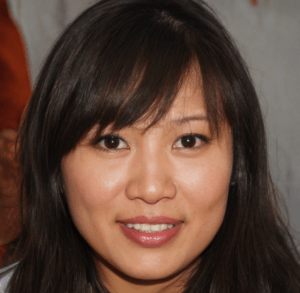What Is sodel4jkuat?
Let’s break it down. We’re not talking about a bloated platform or a trendy tool with more features than sense. sodel4jkuat is a streamlined framework designed for integrating social datasets with machine learning models in a justenough way. Think small codebase, low overhead, and high adaptability instead of “look at all the widgets we built.”
It’s been quietly brewing in academic circles and developer forums—a modular approach to workloads tied to social decisionmaking data. In other words, urban mobility, public health behavior, community analytics—that kind of thing. And it’s built to get results fast, not just build prototypes that stall in concept meetings.
Why Developers Care
Too many AI tools treat developers like overstaffed research teams, assuming you’ve got time for manual preprocessing, large infrastructure alignments, and layers of opaque abstraction. Here’s the win with sodel4jkuat: it doesn’t fight your stack. It plays nicely with Python, works over REST APIs, and integrates with lightweight visualization tools like Plotly or even simple Flask web apps.
That means a new dev or analyst can pick it up and get highsignal insights from messy CSVs, open data APIs, or live input streams, with minimal fuss. It’s not a black box, and it doesn’t pretend to do your thinking for you. You stay in control.
Built For Academic + Practical Teams Alike
University labs love it because it’s built for iteration. One dataset, multiple models, quick tests—that’s the rhythm. But NGO field teams love it too. They can take their scattered data points—or crowdsourced survey inputs—and feed them into meaningful clusters or decisions without waiting weeks for “tech” to catch up.
We’re also seeing applications in planning departments that want AI tooling but aren’t ready for bigdata contracts and onboarding hell. It’s perfect for users who need something that works today, not six stakeholder meetings from now.
Core Features You Actually Use
What sets sodel4jkuat apart is not its laundry list of features—it’s the curated set of things done right:
Pipeline Templates: Preconfigured flows for common decisionmodel applications (classification, clustering, ranking) with live tuning. Modular Connectors: Pull from online sources (e.g., World Bank APIs, Open Street Map), local files, or usersubmitted data without writing a dozen adapters. Embedded Explainability: Basic interpretability baked in—so when a model weights something strangely, you know why. Deployment Light: Plug output into a dashboard or push into a CSV or JSON endpoint. No bloated deployment architecture.
Nothing flashy. Just the stuff that devs and data scientists actually use.
Who’s Using It Today
There’s increasing traction in arenas that mix public data with real outcomes. Urban spatial planners in Nairobi, public health researchers in Southeast Asia, and even resource mapping orgs in remote regions have all started spinning up applications using sodel4jkuat.
The common thread? They all need realtime adaptability and can’t afford to waste cycles on bulky infrastructure. These aren’t tech firms with luxury timelines. They need results that deliver in the field.
Getting Started Without the Usual Headache
No bloated install. No proprietary IDE lockin. You hit the GitHub repo and run the starter project in under 10 minutes. From there, documentation stays lean—it gives you what you need, not 400 pages of fluff. The example datasets are clean and short, perfect for onboarding or demoing to a team in a single sitting.
And because sodel4jkuat focuses on clarity rather than complexity, extending your own connectors or adjusting the model weights isn’t buried behind a maze of nested objects or autogenerated configs. If you know your way around a Jupyter notebook, you’re good to go.
Limitations to Consider
Let’s be real. This isn’t for GPUintensive, multibillion parameter workloads. You won’t be building ChatGPT clones or training multimodal diffusion models with it.
The strength of sodel4jkuat is in mediumbite projects—light operations that benefit from structure without being overengineered. If your dataset is petabytescale or if you need 24/7 inference on a fleet of distributed edge devices, you’ll want a different tool (and probably a bigger budget).
The Long View
Data science is overdue for a phase shift. We’ve spent the better part of a decade building massive frameworks that often solve problems users don’t have. The future isn’t necessarily smaller—but it is smarter.
Frameworks like sodel4jkuat hint at that smarter future. Imagine more decision makers owning their data pipelines. Imagine more developers shipping useful, interpretable models without permission from a fullstack AI team. That’s the shift.
Final Take
You don’t need to bet your entire stack on one framework. But it’s smart to know tools like sodel4jkuat, especially when you’re working closer to the realworld edge of decisionmaking and data. It’s not magic. It’s just lightweight, logical, and way less painful than most of what’s out there.
If you’re tired of overbuilt platforms and underwhelming results, sodel4jkuat might just hit the sweet spot.


 Parisilyn Cruz has played a pivotal role as an article writer and key contributor in the development of Innov Art Foundry. Her deep passion for the art world is reflected in the insightful and engaging content she creates, covering everything from the latest art trends to in-depth explorations of virtual reality's impact on artistic expression. Parisilyn's writing not only informs but also inspires readers, making complex topics accessible and intriguing for a broad audience.
Beyond her writing, Parisilyn has been instrumental in shaping the direction of Innov Art Foundry. Her contributions have helped to establish the platform as a trusted resource for both seasoned artists and newcomers to the art scene. By blending her creativity with a keen understanding of the art landscape, Parisilyn Cruz has ensured that Innov Art Foundry remains at the forefront of contemporary art discourse, continually providing valuable insights and fostering a vibrant community of art enthusiasts.
Parisilyn Cruz has played a pivotal role as an article writer and key contributor in the development of Innov Art Foundry. Her deep passion for the art world is reflected in the insightful and engaging content she creates, covering everything from the latest art trends to in-depth explorations of virtual reality's impact on artistic expression. Parisilyn's writing not only informs but also inspires readers, making complex topics accessible and intriguing for a broad audience.
Beyond her writing, Parisilyn has been instrumental in shaping the direction of Innov Art Foundry. Her contributions have helped to establish the platform as a trusted resource for both seasoned artists and newcomers to the art scene. By blending her creativity with a keen understanding of the art landscape, Parisilyn Cruz has ensured that Innov Art Foundry remains at the forefront of contemporary art discourse, continually providing valuable insights and fostering a vibrant community of art enthusiasts.